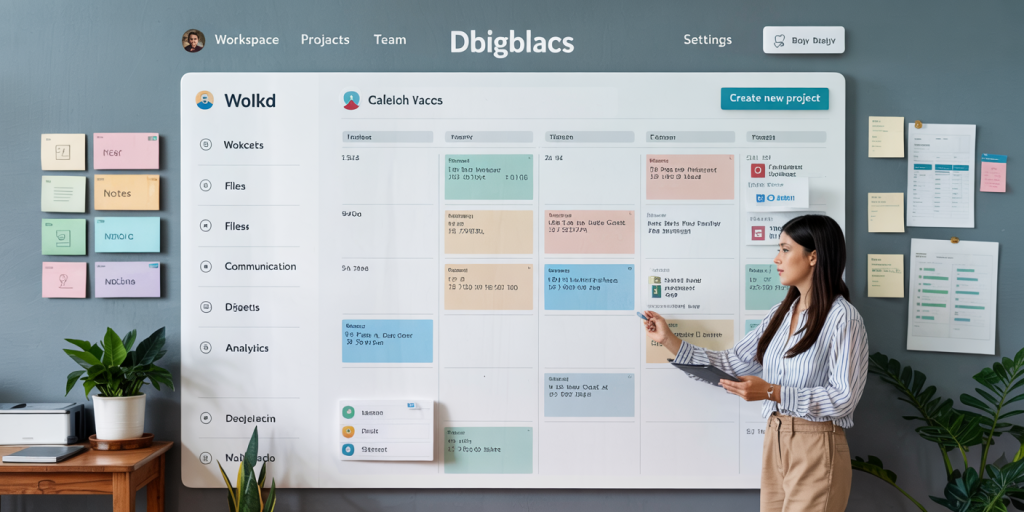Top Tools to Organize Your Digital Life in One Place
In today’s fast-paced digital world, managing multiple apps, devices, and information streams can quickly become overwhelming. From work projects and personal tasks to digital files and communication, keeping everything organized in one accessible, streamlined location is essential. Studies show that the average professional toggles between 9 to 12 different applications daily, often wasting up to 60 minutes a day hunting for files or important data. This inefficiency not only hampers productivity but also adds unnecessary stress to daily routines.

The good news is technological advancements have given rise to powerful tools designed specifically to centralize and simplify the management of digital lives. These platforms integrate calendars, to-do lists, note-taking apps, cloud storage, and communication channels, creating cohesive ecosystems that significantly boost efficiency. This article explores the top tools that can transform how you organize your digital life, supported by practical examples, real cases, and useful comparative insights.

Why Centralizing Your Digital Life Matters More Than Ever
With the surge of remote work and digital communication, people now rely heavily on a variety of software and hardware. A recent Deloitte report indicated that 54% of employees feel overwhelmed by the sheer number of applications they use daily. Fragmented tools scatter your focus, increase chances of forgetting important deadlines, and complicate collaboration. Centralizing digital activities into a single hub not only reduces cognitive overload but also enhances data security by minimizing the risk of scattered sensitive information.
Consider a project manager overseeing multiple teams with separate tools for emails, chats, file sharing, and project tracking. Without centralization, important updates may slip through the cracks, leading to delays and miscommunication. Centralized platforms reduce these risks while creating a transparent workspace where workflows flow seamlessly, and accountability increases.
Notion: The All-in-One Workspace
Notion emerges as one of the most versatile and popular tools for organizing digital lives in one place. Combining note-taking, databases, calendars, and task management, Notion offers unmatched flexibility for individuals and teams alike.
Users appreciate Notion’s modular approach, allowing the creation of custom dashboards tailored to individual needs. For example, freelancers can build project pipelines integrated with deadlines and client feedback, while companies can map out comprehensive knowledge bases alongside team task boards. Real case studies from companies like Pixar validate Notion’s efficacy in creative project management—Pixar uses it internally to track animation workflows and review feedback loops, streamlining their production pipeline.
Some notable statistics highlight Notion’s growth: since 2018, monthly users have surged beyond 20 million, reflecting widespread adoption across educational, corporate, and personal domains. Compared to specialized tools focusing on only notes or task management, Notion’s all-encompassing nature reduces the need to juggle multiple apps, making it a prime candidate to organize your digital life holistically.
Microsoft OneNote and To Do: Powerful Duo for Seamless Integration
For those already embedded in the Microsoft ecosystem, OneNote coupled with Microsoft To Do proves an excellent combination. OneNote acts as a versatile digital notebook which syncs effortlessly across devices, supporting multimedia content such as handwriting, audio, and web clipping. Meanwhile, Microsoft To Do specializes in task management with smart reminders and shared lists.
A sales team at a multinational firm reported saving 30% more time coordinating meetings and tracking client interactions after integrating OneNote and To Do into their daily workflow. OneNote serves as a repository for client notes and strategy outlines, while To Do manages follow-up tasks and deadlines, all synced across Microsoft Teams.
Compared with standalone note apps like Evernote or task-specific apps like Wunderlist (now retired), the Microsoft combination benefits from deep integration with Outlook, Teams, and Windows OS. This integration ensures smooth data flow, reducing the friction of context switching—vital for professionals managing dense schedules.
Todoist: Task Management with Smart Automation
Todoist stands out as a dedicated task management tool offering robust functionalities and integrations that appeal to productivity enthusiasts. It allows users to create tasks, sub-tasks, recurring tasks, priority levels, and project sections with an intuitive interface. Its strength lies in automation and AI-driven features that predict user behavior to suggest task prioritization.
Statistics reveal that Todoist’s premium version boosts user productivity by an average of 20%, as tracked through time spent on completed tasks versus planned tasks. For example, a startup employing Agile methodologies implemented Todoist to organize sprints and backlog items, which helped reduce missed deadlines by 40% and improve overall team output.
The platform’s ability to connect with tools like Google Calendar, Zapier, and Slack means it can serve as the central task organizer while syncing deadlines and notifications seamlessly. Compared to competitors like Asana or Trello, Todoist tends to favor individuals and small teams seeking straightforward yet powerful task workflows without overwhelming complexity.
Google Workspace: Collaborative Organization at Scale
For organizations and individuals prioritizing collaboration, Google Workspace (formerly G Suite) provides a comprehensive suite that centralizes digital work in the cloud. Integrating Gmail, Google Drive, Docs, Sheets, Calendar, and Meet, it enables real-time collaboration with minimal setup.
A noteworthy case is the education sector, where schools worldwide shifted to Google Classroom during the pandemic to maintain continuity. Teachers reported that Google Workspace eliminated fragmented communication by uniting messaging, assignment submissions, and meetings into one platform, improving student engagement and reducing administrative burden.
Data from Google shows over 6 million paying businesses rely on Workspace tools, underscoring its broad reach and reliability. While competitors like Microsoft 365 offer similar capabilities, Google’s web-first approach appeals to users valuing simplicity, accessibility from any device, and superior cloud-native collaboration.
Comparative Table: Choosing the Right Organizer Based on Needs
| Feature / Tool | Notion | Microsoft OneNote & To Do | Todoist | Google Workspace |
|---|---|---|---|---|
| Core Functionality | All-in-one workspace (notes, tasks, databases) | Digital notebooks + Task manager | Task management with automation | Cloud collaboration suite |
| Ideal for | Individuals, startups, creatives | Corporate users, Microsoft ecosystem | Individuals, small teams | Organizations, education |
| Integration | Wide range, API available | Deep integration with Windows & Outlook | Google Calendar, Slack, Zapier | Gmail, Drive, Calendar |
| Offline Access | Yes, with restrictions | Yes | Yes | Limited (mainly online) |
| Collaboration | Yes, but less real-time focused | Shared task lists | Shared projects | Real-time document editing |
| Cost | Free tier + Premium ($4-/mo) | Included with Microsoft 365 | Free tier + Premium ($4-/mo) | Paid plans from $6/user/mo |
| Learning Curve | Moderate to high | Low to moderate | Low | Low |
Future Perspectives: Evolving Horizons in Digital Organization
The ongoing evolution of digital organization tools is driven by artificial intelligence, enhanced integrations, and heightened security needs. Future platforms are expected to leverage machine learning to predict task priorities, automate routine workflows, and personalize user experiences based on behavioral data. Furthermore, advancements in interoperability standards will allow users to seamlessly migrate data across platforms or unify disparate tools under a single dashboard.

For example, AI-assisted assistants could remind users of forgotten tasks, suggest optimal scheduling, and even draft responses or documents proactively. Enhanced visualizations through augmented reality interfaces might make organizing information more intuitive, especially for creative professionals managing complex projects.
Security will also take center stage as centralized digital hubs become lucrative targets. End-to-end encryption, zero-knowledge architectures, and decentralized cloud solutions are likely to gain traction, ensuring privacy without sacrificing functionality.
In conclusion, organizing your digital life in one place is no longer a luxury but a necessity for efficiency, mental clarity, and security. Exploring tools like Notion, Microsoft’s ecosystem, Todoist, and Google Workspace can catalyze this transformation, while staying alert to emerging trends will keep users ahead in the relentless digital race.
